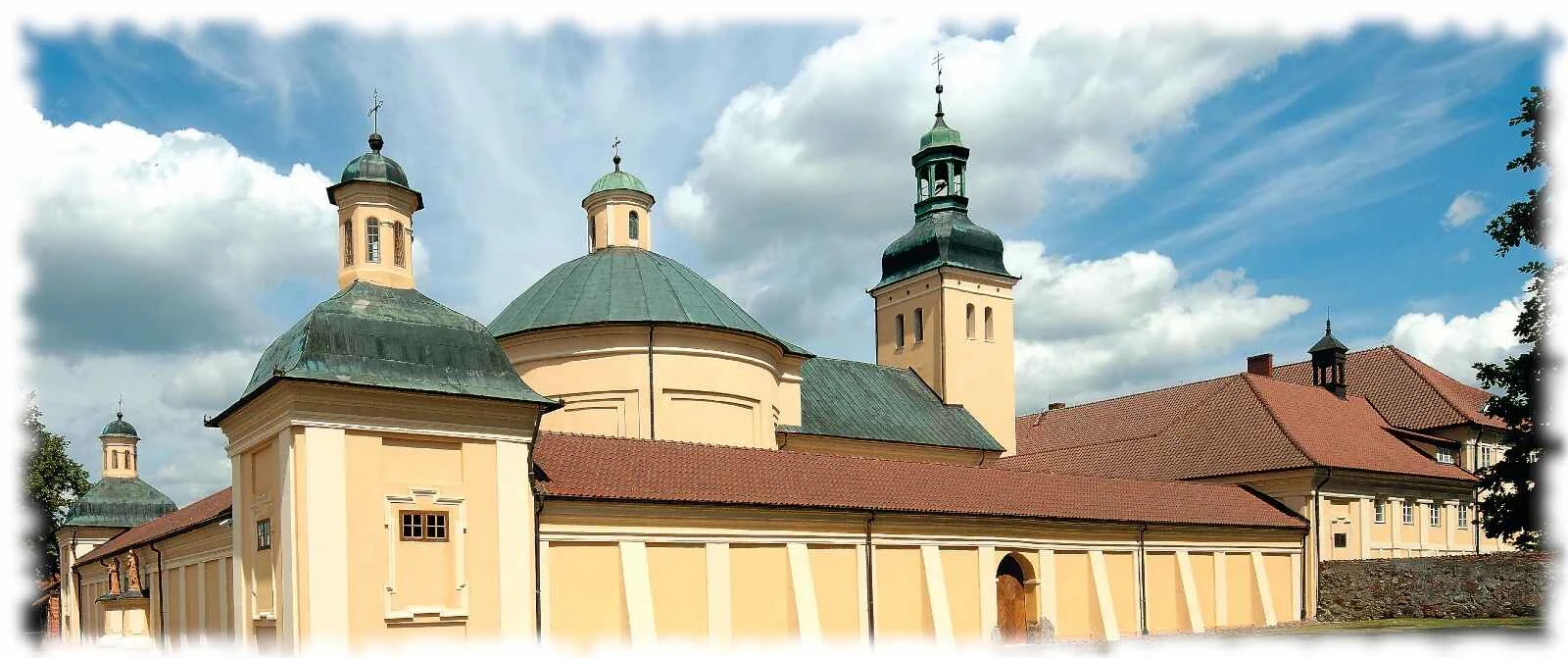Stoczek has been a place of Marian adoration as early as the Middle Ages. The nearby spring, which gave Stoczek its German name of “Springborn,” was believed to have healing powers. The village of Springborn was founded by the Bishop of Ermland, Hermann of Prague, in 1349. However, the first chapel here, where now the monastery stands, was built some centuries later.
Legend has it that on this site of the future chapel two children found a little statuette of Holy Mother in a hole of a tree. The villagers wanted to build a chapel in Our Lady’s honor, but the next day the statuette was back on the place where it has been first found. It was removed again from the hole in that tree and placed in the church, and again it was found the next day in the same hole in the tree. The priest saw this as a sign to build a chapel at this place. Unfortunately the statue of Mary was destroyed during the Reformation period.
Evidence proves that the construction of the monastery dates back to the 17th century. When during the Thirty Years’ War Ermland was attacked from the north by the Protestant Swedes, the Bishop of Ermland, Mikołaj Szyszkowski, decided to build a church as soon as Ermland would return to peace. And indeed, from 1639 to 1641 he erected the Temple of Peace of the Most Blessed Virgin Mary of Springborn (German: “Friedenstempel der allerseeligsten Jungfrau Maria zu Springborn”).
At the stone portals of the monastery two stone tablets with Latin and German inscriptions recall these events. Soon Bishop Szyszkowski donated to the church a copy of the painting “Maria Salus Populi Romanum” (English: “Mary, Salvation of the Roman People”), whose original can be seen in the church of Santa Maria Maggiore in Rome.
The pilgrimage church in Stoczek was entrusted to the care of the Franciscans. However, as the number of pilgrims visiting the church decreased as the Prussian government began limiting the access to it in 1772. Finally, during the secularization in 1810, the monastery was expropriated.
In 1841, it was given back to the Church, responding to a request from Bishop Josef von Hohenzollern. Thousands of believers came to the reopening ceremony of the pilgrimage site. In 1920, Franciscans from Silesia returned to Springborn.
When Austria was annexed to National Socialist Germany in 1938, Austrian bishops were imprisoned in Springborn. After World War II, Ermland became Polish territory and many Germans fled or were evacuated. In 1952, the monastery was confiscated by the Polish Communist government and even served for a year as a place of detention of the Primate of Poland, Stefan Cardinal Wyszyński.
In 1956, the monastery was given back to the diocese, and the pilgrimage site was entrusted to the care of the Congregation of Marian Fathers. However, the religious Community had to pay for the right to use the monastery because it remained state-owned until 1972. The restoration works could begin only after that year.
On June 19, 1983, the miraculous image “Mary, Mother of Peace” was crowned by Pope John Paul II. The Church of Visitation of the Blessed Virgin Mary in Stoczek/Springborn was raised to the rank of a minor basilica on May 19, 1987.


